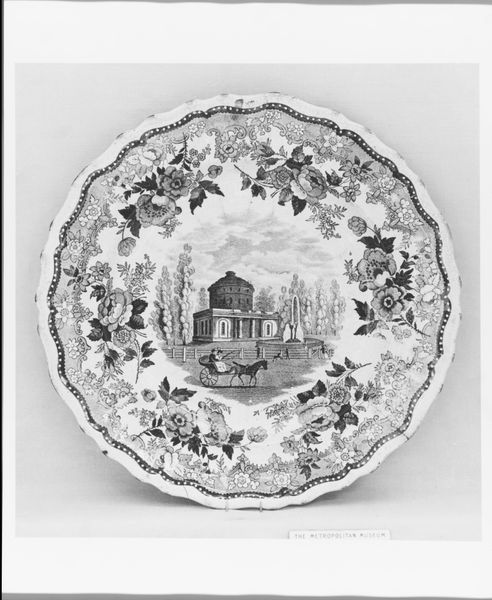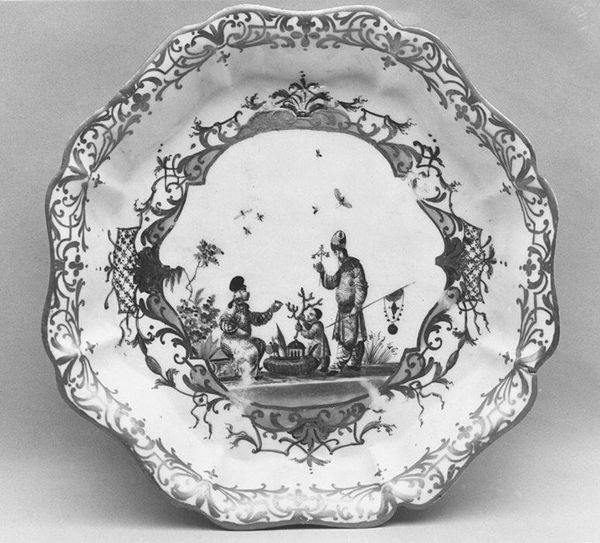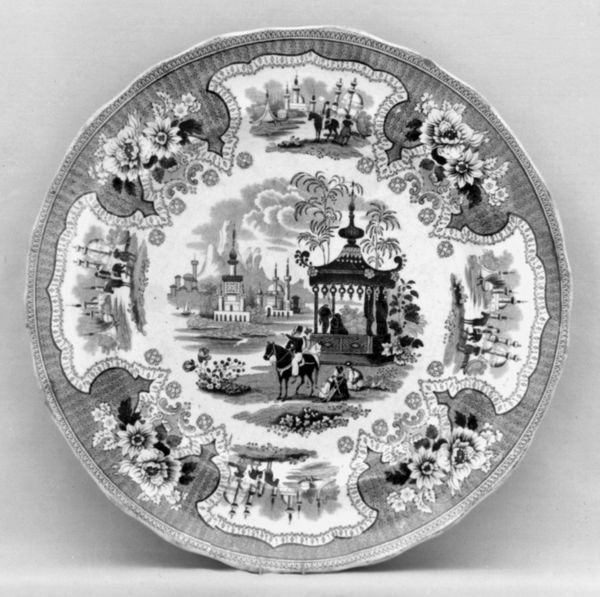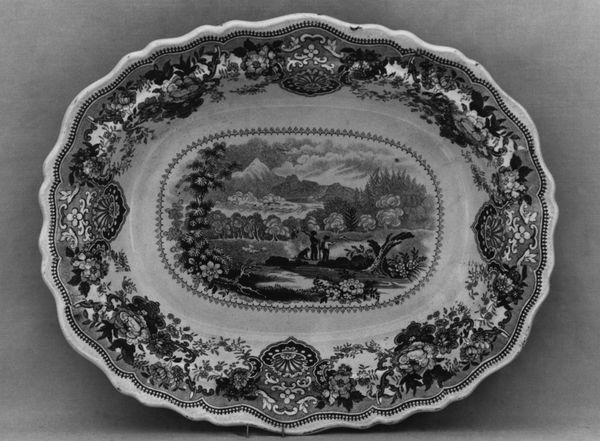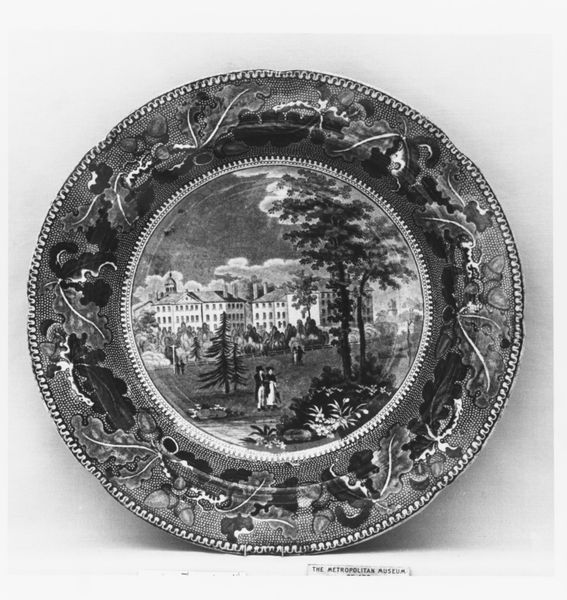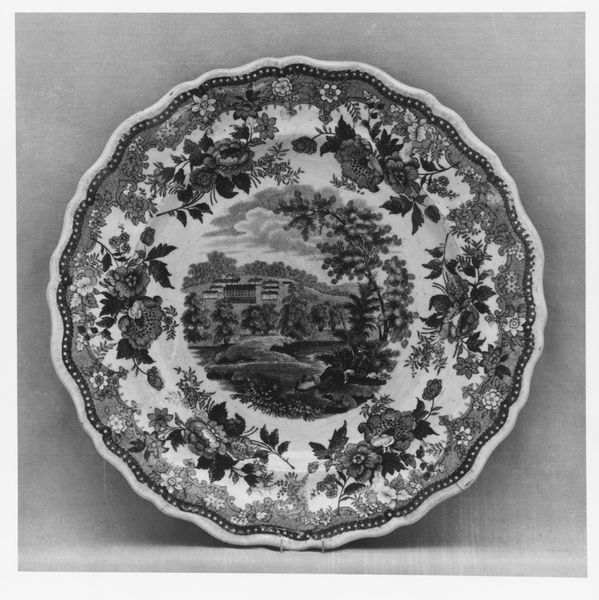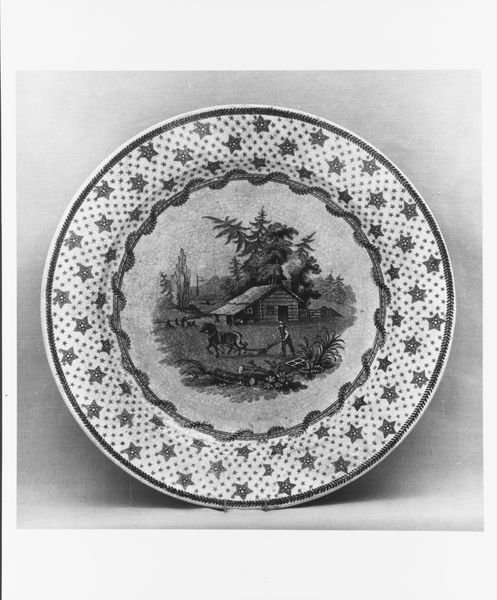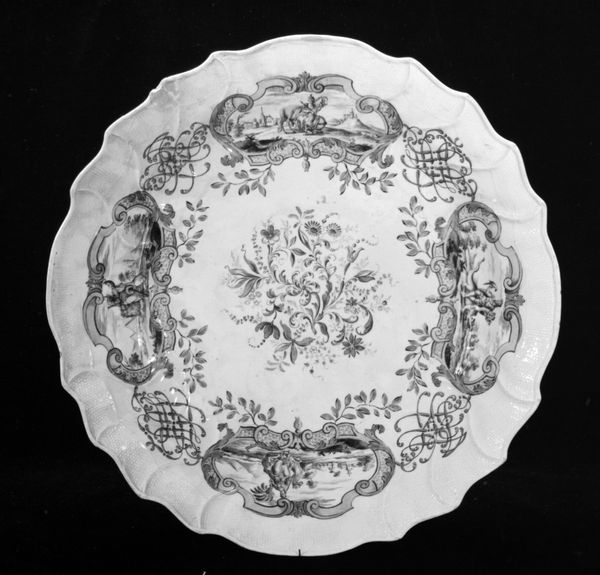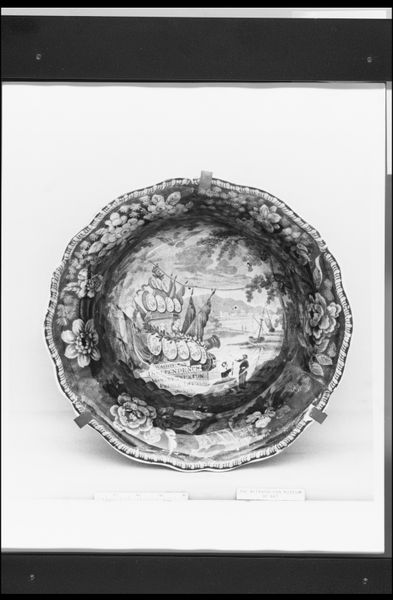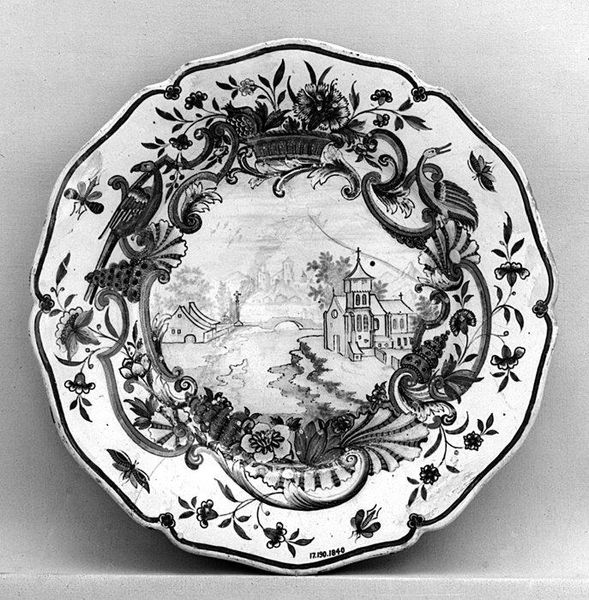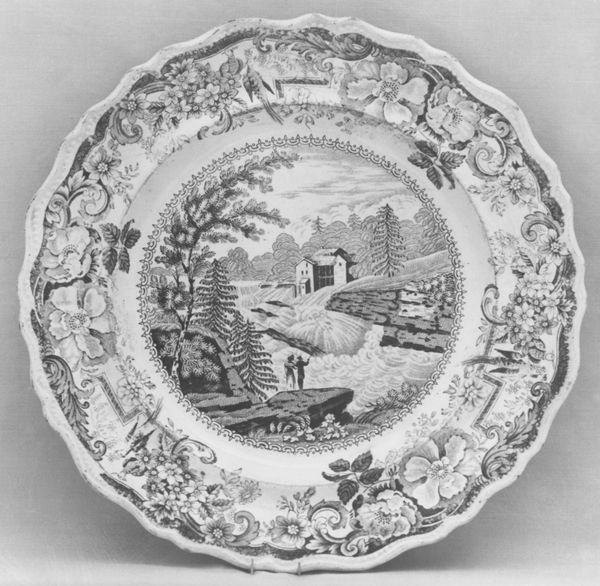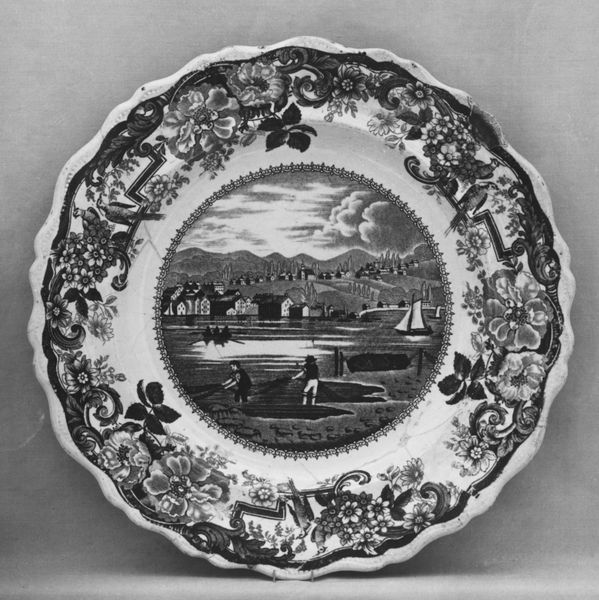
drawing, print, etching, ceramic
#
drawing
#
boat
# print
#
etching
#
landscape
#
ceramic
#
orientalism
#
decorative-art
Dimensions: Diam. 10 1/2 in. (26.7 cm)
Copyright: Public Domain
Curator: Here we have a "Plate," crafted sometime between 1828 and 1838 by Job and John Jackson. It’s currently held at the Metropolitan Museum of Art. This piece showcases etching and drawing techniques on ceramic. Editor: Oh, my! It's charmingly… restrained. I mean, look at all that intricate detail, the floral patterns fighting for attention with the dreamy central landscape. It feels a bit like trying to contain a wild garden within strict borders, doesn’t it? Curator: It does, and that contrast is quite intentional. This decorative art plate reflects the fashion for Orientalism prevalent at the time. Europeans were fascinated by romanticized visions of the East. Editor: Right, that imagined East! You can see it in the willow pattern and that lone boat with the improbable sail, so peaceful yet slightly… adrift? It makes me wonder about the stories they're trying to tell. Or perhaps not telling. Curator: Exactly! The print is a fantasy, a commodity produced for a specific market. It's interesting how cultural appropriation manifests in decorative objects like these, domesticating the "exotic" for everyday use. Editor: So true. I keep coming back to how incredibly detailed the etching is, though. You almost forget that you’re looking at something that was meant to hold… gravy, perhaps? It’s both precious and practical. Talk about tension! Curator: It also speaks to the broader context of the burgeoning Industrial Revolution. Manufacturers like the Jacksons produced these transfer-printed wares to satisfy a growing middle class eager to display their prosperity. Editor: Well, it certainly worked. I find myself strangely drawn to it, despite its artifice. It is this gorgeous little paradox: mass produced, yet meticulously rendered; "foreign", but utterly domestic. What do you take away from it? Curator: I think it underscores how even everyday objects carry complex layers of meaning. It invites us to think about the narratives we project onto things, and the power of images in shaping perceptions across time and cultures. Editor: I like that. For me, it is an uncanny reminder that even the most seemingly innocent objects can be vessels of imagination and hidden cultural stories. Next time I look at the pretty art on a plate I won’t take it for granted.
Comments
No comments
Be the first to comment and join the conversation on the ultimate creative platform.
